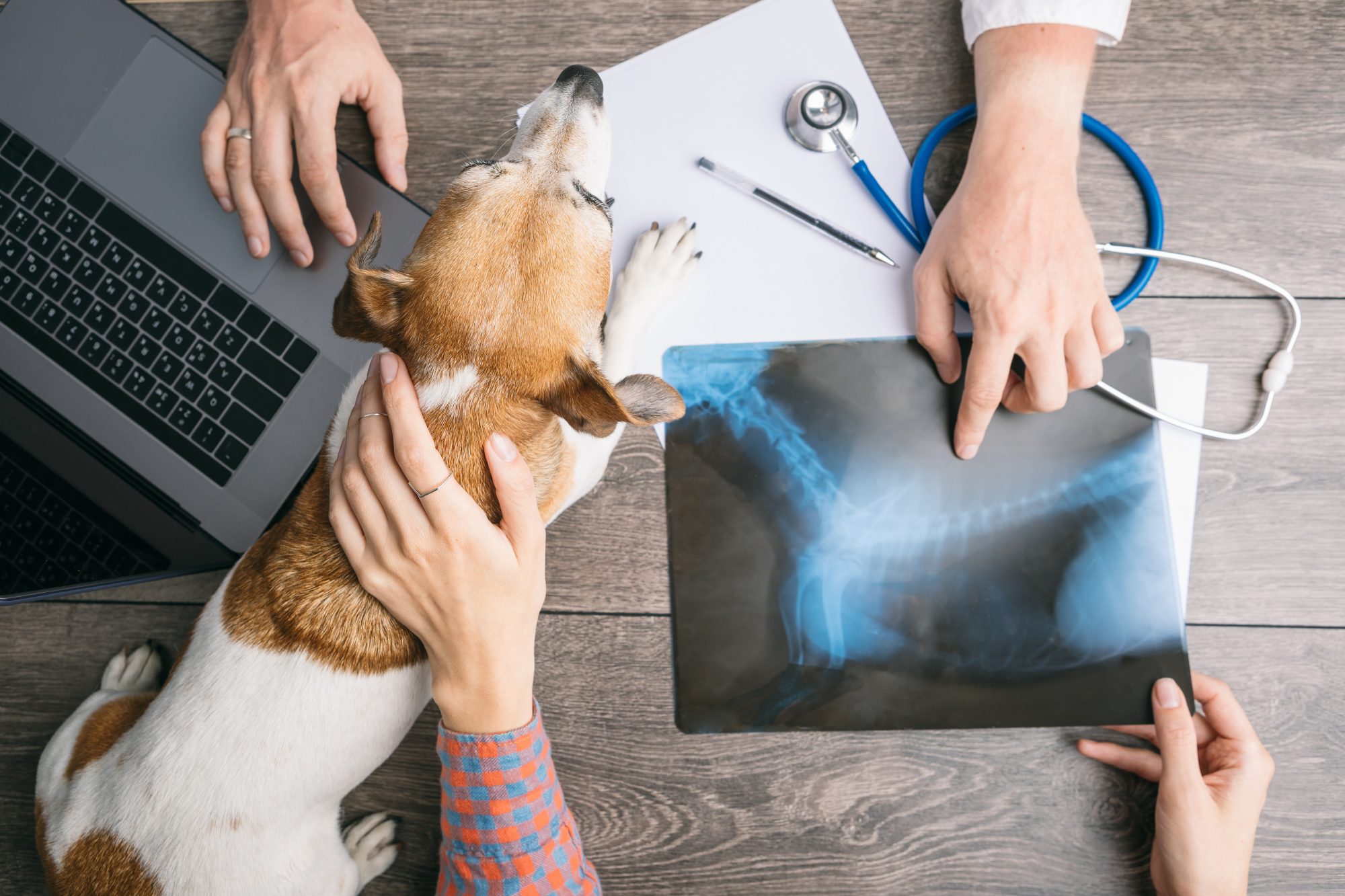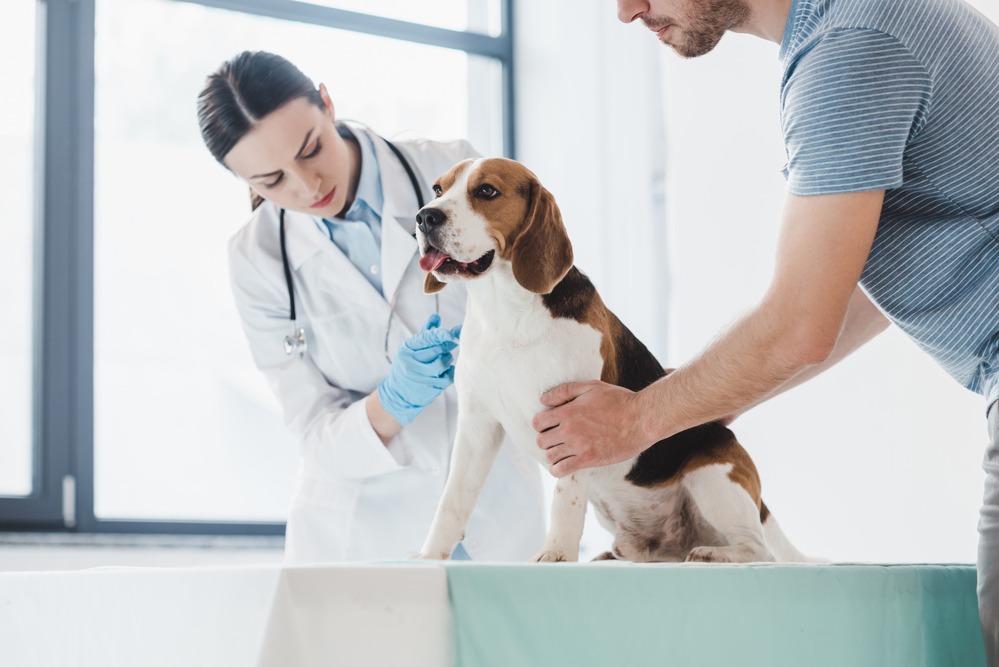Why Animal Rehabilitation Is Essential: the Benefits of Veterinarian Services for Your Family pet's Recuperation
Pet rehab is an important part of recuperation for pets facing injuries or impairments. Vet solutions supply vital support through customized rehabilitation plans that address specific requirements. These plans commonly consist of discomfort administration, physical treatment, and dietary support. Understanding the various aspects of pet rehabilitation can brighten its relevance in boosting healing end results. What specific advantages do these services use, and exactly how can they transform an animal's recovery journey?
Recognizing Animal Rehabilitation
Animal rehabilitation includes a variety of healing methods focused on restoring the health and wellness and functionality of injured or disabled animals. This area integrates various strategies, including physical treatment, hydrotherapy, and work therapy, tailored to fulfill the specific requirements of each animal. Rehab professionals assess a pet's condition, establishing individualized treatment plans that may include workouts to strengthen muscular tissues, enhance wheelchair, and boost general wellness. The process not just focuses on physical healing but likewise addresses emotional and behavior facets. Animals often experience stress and anxiousness following an injury, making mental health and wellness factors to consider crucial in rehab. By producing a helpful setting, therapists can help animals restore their self-confidence and adapt to their new conditions. With regular sessions, animals can experience considerable enhancements, ultimately causing a better top quality of life. Overall, recognizing animal rehab highlights its value in advertising healing and enhancing the bond in between animals and their proprietors.
The Role of Discomfort Management in Recuperation
How essential works discomfort monitoring in the recuperation of damaged animals? It plays an important function in facilitating healing and improving the total well-being of pet dogs. Correct discomfort monitoring not only reduces discomfort yet additionally advertises wheelchair, making it possible for animals to take part in rehabilitation activities needed for healing. When pain is efficiently taken care of, pets often tend to respond favorably to therapy, resulting in quicker rehab outcomes.Veterinarians use different methods to analyze and resolve discomfort, including medications, acupuncture, and different treatments. By tailoring pain monitoring strategies to the private requirements of each animal, vets can guarantee that pets stay tranquil and participating throughout their healing journey. Moreover, reducing pain helps decrease anxiety, which can inhibit healing and lengthen recovery times. To sum up, effective discomfort monitoring is necessary for enhancing the healing process and boosting the lifestyle for hurt animals.
Physical Treatment Methods for Pets
Many physical treatment techniques are readily available to help in the recovery of family pets recuperating from injuries or surgeries (emergency vet bellingham). These strategies can improve wheelchair, ease pain, and promote healing. Restorative exercises, for instance, help strengthen muscles and improve joint function, permitting family pets to reclaim their physical capabilities progressively. Hand-operated treatment, that includes massage and mobilization, can alleviate stress and enhance circulation, adding to a faster recovery.Other techniques such as easy variety of activity exercises urge joint adaptability and decrease tightness. Furthermore, electric stimulation treatment might be used to promote nerves and muscular tissues, advertising recovery and discomfort relief.Veterinary experts commonly tailor these strategies per pet dog's particular needs, making sure a complete recovery strategy. By implementing these physical therapy methods, pet dogs can experience better lifestyle and a much more effective healing from their conditions. The assimilation of these practices right into recovery programs is necessary for excellent healing outcomes
Advantages of Hydrotherapy for Rehab
Hydrotherapy supplies substantial advantages in pet recovery, specifically in boosting movement. This water-based treatment promotes discomfort alleviation while offering convenience to wounded or recovering animals. In addition, it helps with strength-building workouts that contribute to general physical recuperation.
Boosted Flexibility Improvement
As pets recuperate from injuries or surgical procedures, improved movement often comes to be a main goal of their rehab. Hydrotherapy serves as a useful tool in accomplishing this purpose. With water-based workouts, pets can participate in low-impact activities that facilitate joint wheelchair and strengthen muscles without the stress of weight-bearing tasks. The buoyancy of water supports their bodies, permitting boosted variety of motion and flexibility enhancement. Furthermore, hydrotherapy urges better equilibrium and coordination, which are crucial for restoring typical movement patterns. Regular sessions can cause significant development in a pet's physical capacities, inevitably enhancing their quality of life. This strategy not only aids in recovery but also advertises a much more energetic and fulfilling way of life post-rehabilitation.
Discomfort Alleviation and Comfort

Remedy for discomfort is an essential aspect of animal rehabilitation, and hydrotherapy substantially adds to this procedure. By utilizing water's buoyancy, hydrotherapy lowers joint stress and anxiety and alleviates discomfort throughout motion. This restorative approach offers a soothing setting where family pets can involve in mild workouts without the complete weight of their bodies impacting their healing. The warm water boosts blood flow, promoting healing while also encouraging relaxation. Additionally, hydrotherapy sessions can be tailored to meet the details demands of the pet, ensuring ideal comfort. As animals experience decreased pain and boosted comfort levels, their general determination to take part in rehabilitation activities usually enhances, causing an extra effective recovery trip. As a result, hydrotherapy serves as a crucial device in improving discomfort alleviation and comfort throughout recovery.
Stamina Building Exercises
Strength-building exercises play an important role in the recovery process, with hydrotherapy offering unique advantages. This form of therapy uses water resistance to boost muscle mass strength without putting too much pressure on the joints. The buoyancy of water sustains the pet dog's weight, enabling for more secure motion and enhanced series of movement. Additionally, hydrotherapy can improve cardio health and advertise general health and fitness, helping in faster recovery from injuries or surgical procedures. The regulated setting also reduces the danger of reinjury, making it a perfect option for pet dogs needing rehab. Routine hydrotherapy sessions can cause recognizable enhancements in movement, toughness, and endurance, ultimately boosting the pet's top quality of life and capability to go back to regular activities.
Importance of Custom-made Rehabilitation Strategies
Customized rehab plans are necessary for dealing with the one-of-a-kind needs of each animal, making sure individualized therapy methods. These strategies allow for efficient progress tracking and necessary adjustments, promoting suitable healing end results. Furthermore, an all natural method can improve the general wellness of the animal, promoting a much more extensive rehab experience.
Individualized Therapy Approaches
While several recovery programs embrace a one-size-fits-all strategy, the one-of-a-kind needs of each animal necessitate individualized therapy strategies for excellent healing. Customized rehab strategies take into consideration numerous elements, consisting of the animal's species, age, clinical background, and particular injuries or problems. By tailoring interventions, vets can resolve each family pet's distinct obstacles, making the most of the performance of the rehab process. Embellished plans may incorporate different methods such as physical treatment, hydrotherapy, and therapeutic exercises, ensuring that the therapy aligns informative post with the animal's capabilities and progress. In addition, tailored methods foster a more powerful bond between the family pet and the caretaker, promoting an extra interesting and supportive healing setting. Ultimately, customized treatment is essential for accomplishing best possible results in pet rehabilitation.
Progression Monitoring and Adjustments

Holistic Recovery Approaches
All natural recovery approaches are important for reliable pet rehabilitation, as they highlight the value of customized therapy strategies customized per pet's specific needs. This method takes into consideration the physical, psychological, and environmental factors affecting recuperation. Personalized rehabilitation plans may include a mix of physical therapy, dietary counseling, and behavioral alterations. By dealing with these varied aspects, veterinarians can boost the general health of the animal and advertise a click for info much faster healing. Such tailored methods help with a much deeper understanding of the pet's special challenges, leading to extra effective interventions. Eventually, all natural recovery approaches not just boost physical health yet additionally contribute to the pet's psychological and emotional security, ensuring a thorough rehab experience.
The Effect of Nourishment on Recovery
Nourishment plays a vital function in the recovery procedure for rehabilitating pets, often identifying the speed and efficiency of healing. A healthy diet provides the essential nutrients that sustain tissue repair, boost the immune system, and enhance general vigor. Protein is specifically essential, as it assists in muscle restoring and recuperation from injuries. Necessary fatty acids, vitamins, and minerals also add to lowering inflammation and promoting optimum mobile function.Veterinarians often emphasize the importance of tailored nourishment plans, taking into consideration each animal's certain requirements, age, and health status. Correct hydration is similarly vital, as liquids help with nutrient absorption and aid in cleansing. By making sure that family pets receive ideal nutrition, caretakers can considerably enhance their chances of an effective healing, leading to far better long-lasting health end results. Eventually, nourishment acts as a fundamental element in the rehab trip, supporting pets in reclaiming strength and strength post-injury or disease.
Success Stories: Animals That Prospered After Recovery
Successful rehab tales abound, showcasing the strength of pets who have actually gotten rid of significant difficulties. Take, as an example, Bella, a golden retriever who experienced extreme injuries from a car mishap. With devoted veterinary treatment and a thorough recovery program, she reclaimed her flexibility and went back to her lively self, much to her proprietor's pleasure. Likewise, Max, a senior feline diagnosed with arthritis, experienced remarkable improvement with a mix of physical treatment and pain management. His newfound dexterity permitted him to appreciate his favored sunbathing spots once more. An additional motivating situation is that of Coco, a rescued greyhound that got rid of anxiety through therapy and socialization methods, enabling her to grow in her new home. These success stories exemplify the transformative power of pet recovery, highlighting that with the appropriate support, animals can not only recoup yet lead meeting lives, enriching the bonds they show to their families.
Often Asked Concerns
How Long Does the Recovery Refine Normally Take for Pets?
The rehab procedure for pet dogs commonly varies based on the injury or condition, ranging from a few weeks to several months. Individual progression, treatment type, and commitment to workouts significantly influence the general period of recovery.
Exist Any Kind Of Dangers Related To Pet Rehab?
Animal rehabilitation might bring dangers such as exacerbation of injuries, improper techniques bring about pain, or inadequate tracking during recuperation. These variables can prevent development and impact the total performance of the rehab procedure.

Can All Pets Gain From Rehab Solutions?
Not all More Bonuses pets may need rehabilitation, however numerous can profit considerably. Recovery solutions can improve movement, relieve discomfort, and improve general wellness, specifically for those recuperating from injuries, surgical procedures, or chronic problems.
Just How Can I Prepare My Family Pet for Rehabilitation Procedure?

What Signs Indicate My Pet Dog Demands Rehabilitation?
Signs showing an animal may need rehabilitation consist of trouble strolling, limping, lowered task degrees, unwillingness to jump, or signs of pain. Observing these habits can motivate owners to look for specialist evaluation and therapy for their animals.